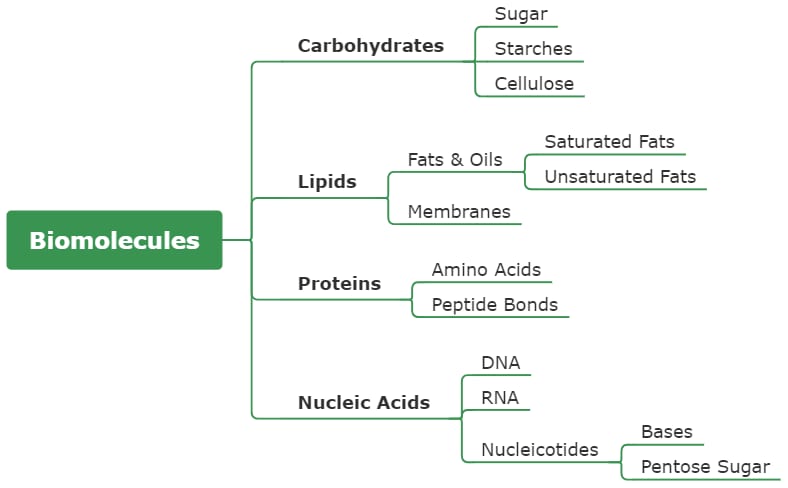Cells are the smallest form of life and an important part of all living things. From humans to microorganisms, they provide function and structure. The composition of cells includes inorganic ions, water, and carbon-containing molecules. Nucleic acids are one of the most prominent carbon-containing molecules present in a cell.
Though the concept of nucleic acids is complex, you can make it easily understandable using a concept map - an information organizer diagram that makes complex subjects easier to absorb. In this article, you will learn what nucleic acids are and how you can create a nucleic acids concept map for a better understanding. Let’s get the discussion started.
In this article
Nucleic Acids: What Exactly They Are?
The organic molecules present in a living cell are commonly called nucleic acids. They are long-chain polymeric molecules. The repeating unit or monomer is called a nucleotide, which is why nucleic acids are also known as polynucleotides. As far as the primary function of nucleic acids is concerned, it supports the transfer of genetic information between different generations.
The polymers of nucleotides are formed by deoxyribonucleic acid (DNA) and ribonucleic acid (RNA). They both are the key components or types of nucleic acids. Transmitting specific characteristics from one generation to another is the prime responsibility of RNA and DNA.
Monitoring the performance of every cell function is the key function of DNA. It is organized into chromosomes present in a nucleus. Chromosomes contain cellular activities. Two twisted polynucleotide chains combine to form a double helix structure of DNA. Bases bind within the helix, and the hydrogen bond is bundled with two helices. The presence of phosphate groups makes DNA negatively charged.
When it comes to protein synthesis, RNA plays a key role. It is responsible for the translation and decoding of genetic code. An RNA molecule is composed of nitrogen-containing cyclic bases and phosphoric acid. A single strand is present in RNA compared to DNA (which consists of double strands).
Explain Nucleic Acids with a Concept Map
Now that you know what exactly nucleic acids are. Let’s explain this subject with a credible information organizer tool - a concept map. We will first go through the benefits of this diagram and then look at the way to make it using a reliable utility within minutes.
i. Benefits of a Concept Map
The way concept maps can benefit you is as follows.
1. Make Concept Interpretation Easy
It does not matter how complex your idea or concept is; it all depends on how you present it and how others interpret it. This is where a concept map plays its part by making the interpretation easy for everyone.
In comparison to reading text-based information or books, it is very easy to grab the information from a concept map, as they highlight the main points, and you can understand the whole system with easy skimming.
2. Assists in Visualizing Goals
Visualizing end goals is very important before you start working on any idea. A concept map helps you determine links between different concepts and what influence they can have on each other. This is how you can see whether or not a specific concept can help you achieve what you want.
While working on an idea, you must be familiar with the indirect consequences of a program. A concept map enables you to keep a close eye on this factor, ensuring a higher rate of success in the end.
3. Explains Relationships between Different Concepts & Ideas
Understanding the relationships between the concept and various ideas is necessary to familiarize yourself with the impact of each idea on end goals. The cross links in a concept map are used to explain the relationships of each idea.
4. Gives Your Concept a Hierarchical Structure
A concept map mostly goes from top to bottom. The flow of information in a concept map can also be from “right to left” or “left to right.” The organized format of this diagram provides your concept with a hierarchical structure, making it easily understandable for every viewer.
ii. 5 Quick Steps to Create a Nucleic Acids Concept Map
Stop searching for tools to create your nucleic acids concept map, as Wondershare EdrawMind is a complete package in this regard. The availability of built-in templates, customizing features, and easy sharing make this tool stand out in the market, which is why it is being used by millions of people around the world.
Let’s look at steps you can follow to make a concept map for nucleic acids using EdrawMind. Before you go ahead, make sure you have EdrawMind installed on your computer, laptop, or any other device you use.
Step 1: Open the tool on your system. A basic layout will appear right away on your screen, as shown below.

Step 2: You can change the layout at any time. For example, we have changed it to top-to-bottom in the image below. To change the layout of your map, go to the right pane and open the drop-down menu in the “Layout” tab, as shown below.
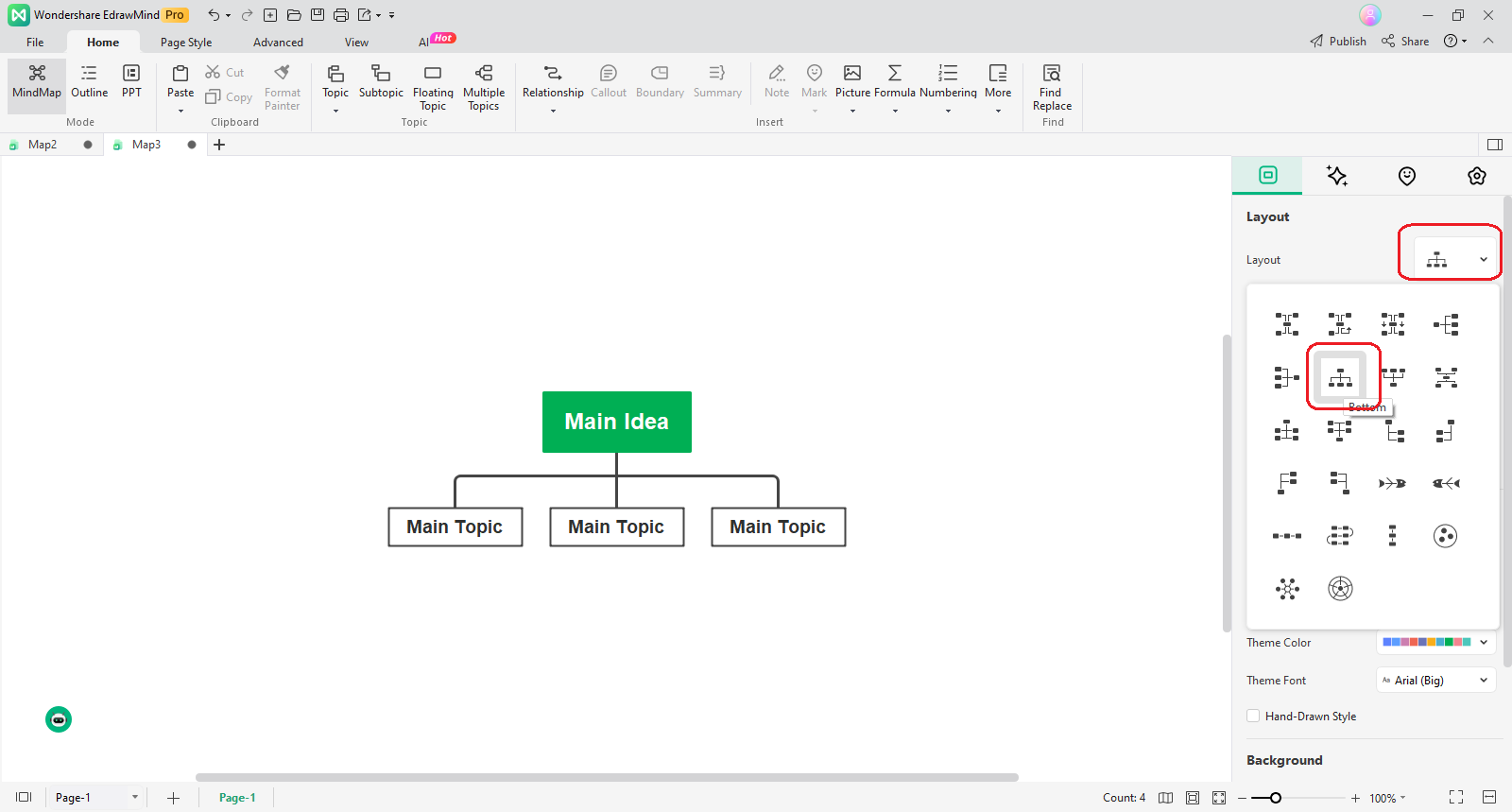
Step 3: Right after choosing the layout you want, put the data related to nucleic acids, like we have shown the key components of nucleic acids in the figure below. You can add as much data and information as you want. All you need is to add more and more branches until the diagram meets your requirements.
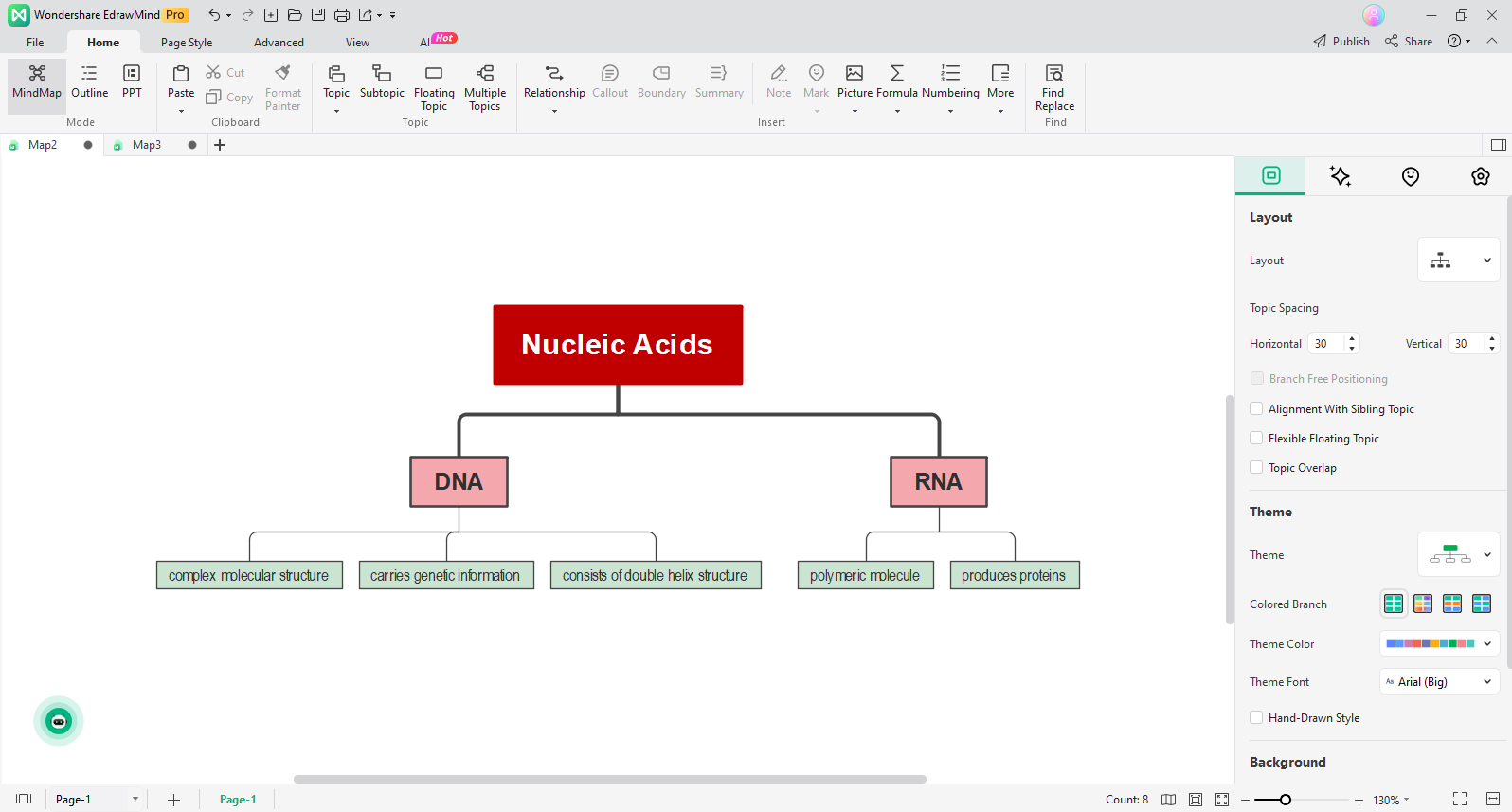
Step 4: EdrawMind supports easy sharing, as stated earlier. If you want to share your concept map with colleagues, friends, or anyone else, hit the “Share” button from the top-right corner, as shown below.
Then, choose the platform (Pinterest, LINE, Twitter, or Facebook) to share your map or simply copy the shareable link. This tool also allows you to set the accessibility of the link, e.g., from 3 days to 30 days, or make it permanent.
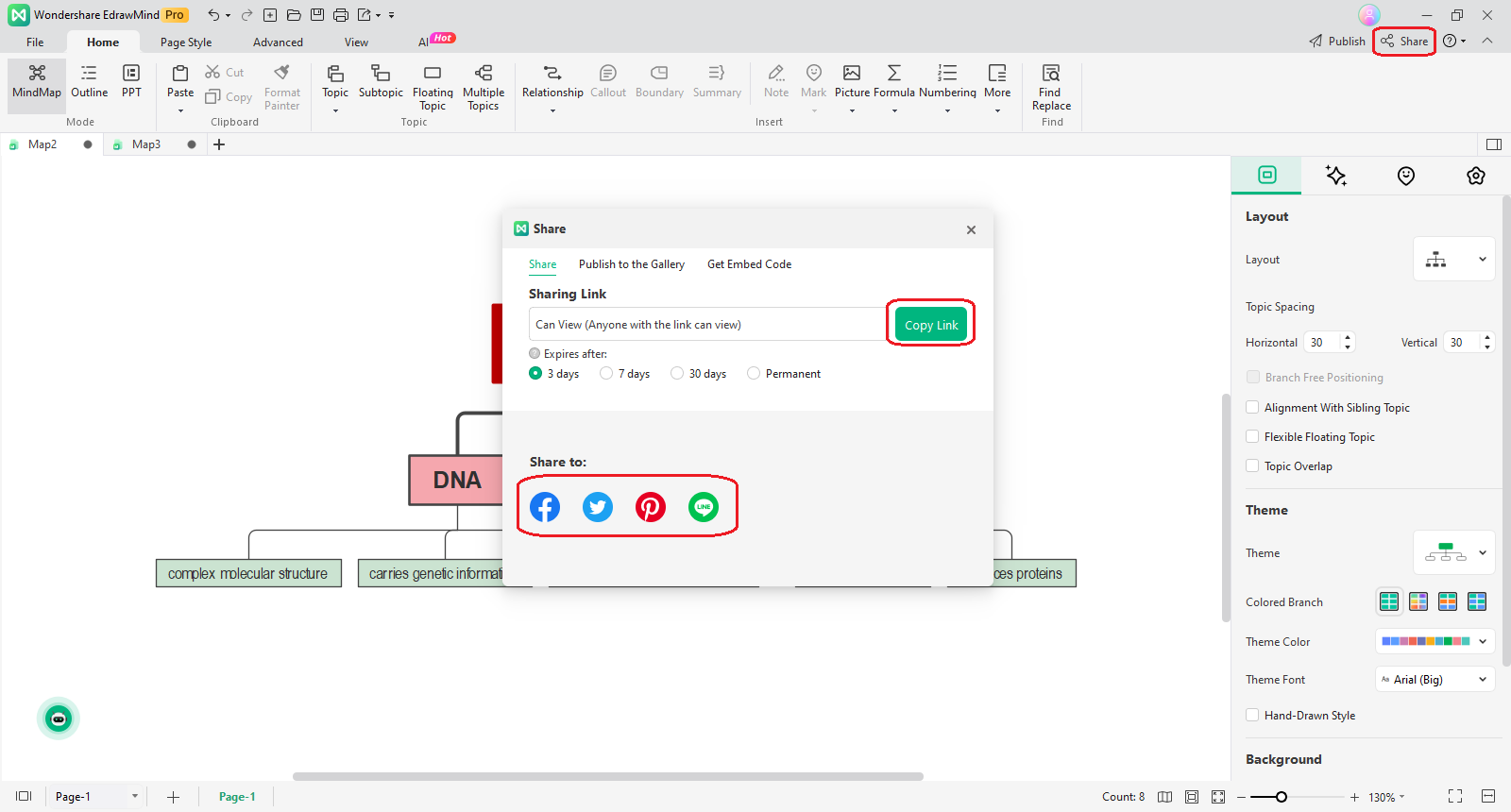
Step 5: Once you are done with making your concept map, you can export it in various file formats as per your requirements. For this, you need to go to the “File” menu and choose “Export.” From there, you can choose any format you want. Once done, tap on the “Export” button. Doing this will help you save the concept map on your device.
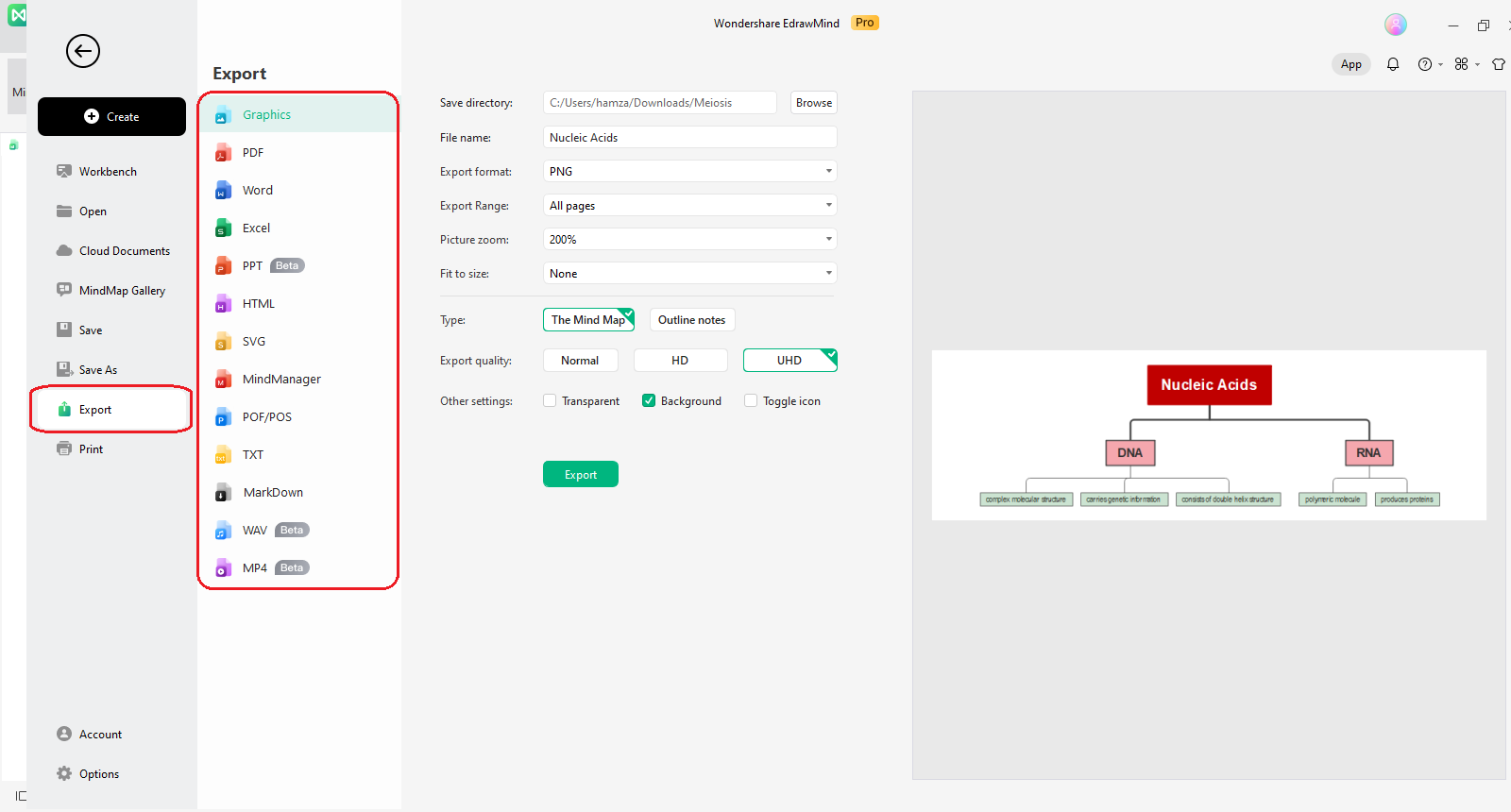
Templates You Can Use to Make a Nucleic Acids Concept Map
Now, you are familiar with making a concept map for nucleic acids. Let’s explore some pre-built, editable templates created in Wondershare EdrawMind. If you want to make a similar map, you can try any of the below-listed templates from the EdrawMind gallery.
1. Nucleic Acids Overview Concept Map Template
The name of nucleic acids is associated with their initial discovery when they were discovered in the nucleus. This template focuses on the functions and composition of nucleic acids. It says that nucleic acids are composed of nucleotides and function as blueprints. DNA and RNA are two major types of nucleic acids.
Nucleotides are made up of nitrogen bases, phosphate, and sugar. Blueprints control cellular life, and DNA is a molecular structure for genes. In contrast, RNA serves in transmitting plans for proteins. Moreover, according to this diagram, nitrogen bases are of four types. Try this template to create similar concept maps and save your time to a great extent.
2. Biomolecules Concept Map Template
This template helps you learn about the four types of biomolecules, including nucleic acids, proteins, lipids, and carbohydrates. The key components of nucleic acids, according to this diagram, are DNA, RNA, and nucleotides (the repeating unit). Nucleotides are composed of protein sugar and bases.
On the other hand, proteins are made up of amino acids and peptide bonds. Fats and membranes are important elements of lipids, whereas carbohydrates consist of cellulose, starches, and sugar.
3. Proteins Concept Map Template
As you know, nucleic acids play a key role in producing proteins that help living things perform certain functions. The concept map template given below focuses on proteins and their production.
Proteins are made through transcription and translation. Transcription occurs in the nucleus and starts from DNA that carries genetic information. It creates mRNA, which contains codons. In contrast, translation occurs in cytoplasm that contains ribosomes and can fit two tRNA.
tRNA contains specific amino acids. Try this editable template from the EdrawMind gallery to make similar diagrams.
☘️Explore creative Concept Map Templates with EdrawMind! Learn to craft stunning visuals effortlessly, whether you're a beginner or pro. Click now for seamless concept mapping!
Wrap Up
Nucleic acids are essential to all living things, as they are the building blocks of the cell and help humans and microorganisms perform important functions. DNA and RNA are key elements of nucleic acids that help in carrying genetic information and transferring it from one generation to another. Being a complex scientific subject, it often becomes challenging to understand for many people.
There is nothing better than using a concept map to grasp the knowledge of nucleic acids easily. This diagram organizes information in a way that everyone can understand easily and remember things in the long run. In addition, a concept map provides your concept with a structural hierarchy and enables you to visualize end goals.
There are a couple of concept mapping tools, but trusting random utilities can be risky. If you are short on time and are looking for a dependable diagramming tool to make a nucleic acids concept map, EdrawMind should be your first choice. It offers a free trial, ready-made templates, diverse customization features, superb customer support, easy sharing, and much more. Give it a try. Good luck!



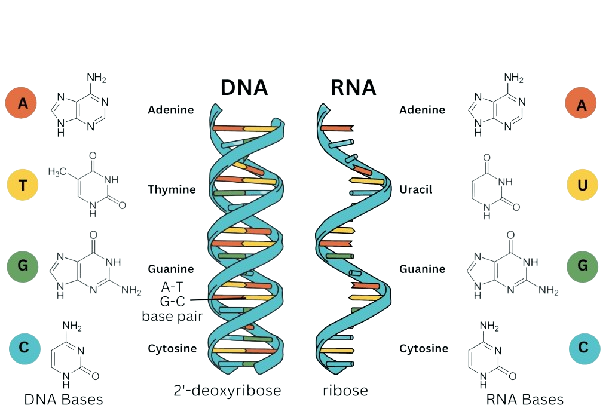
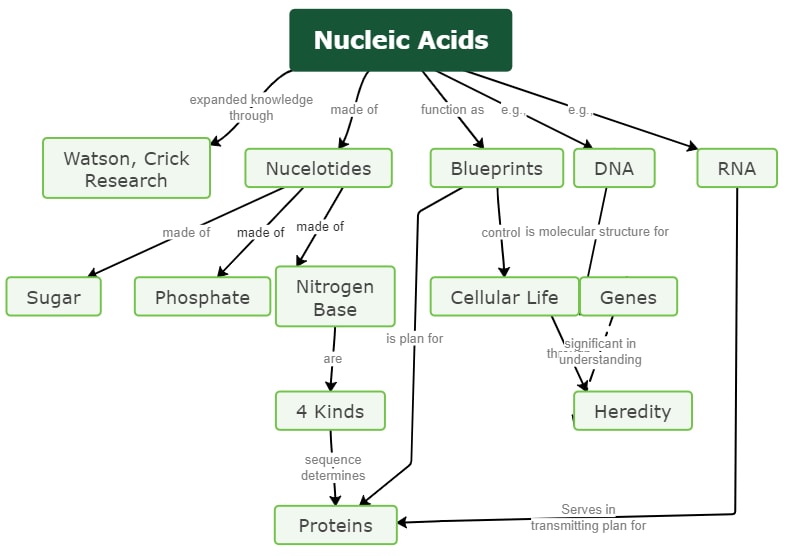
 below.
below.  below.
below. 